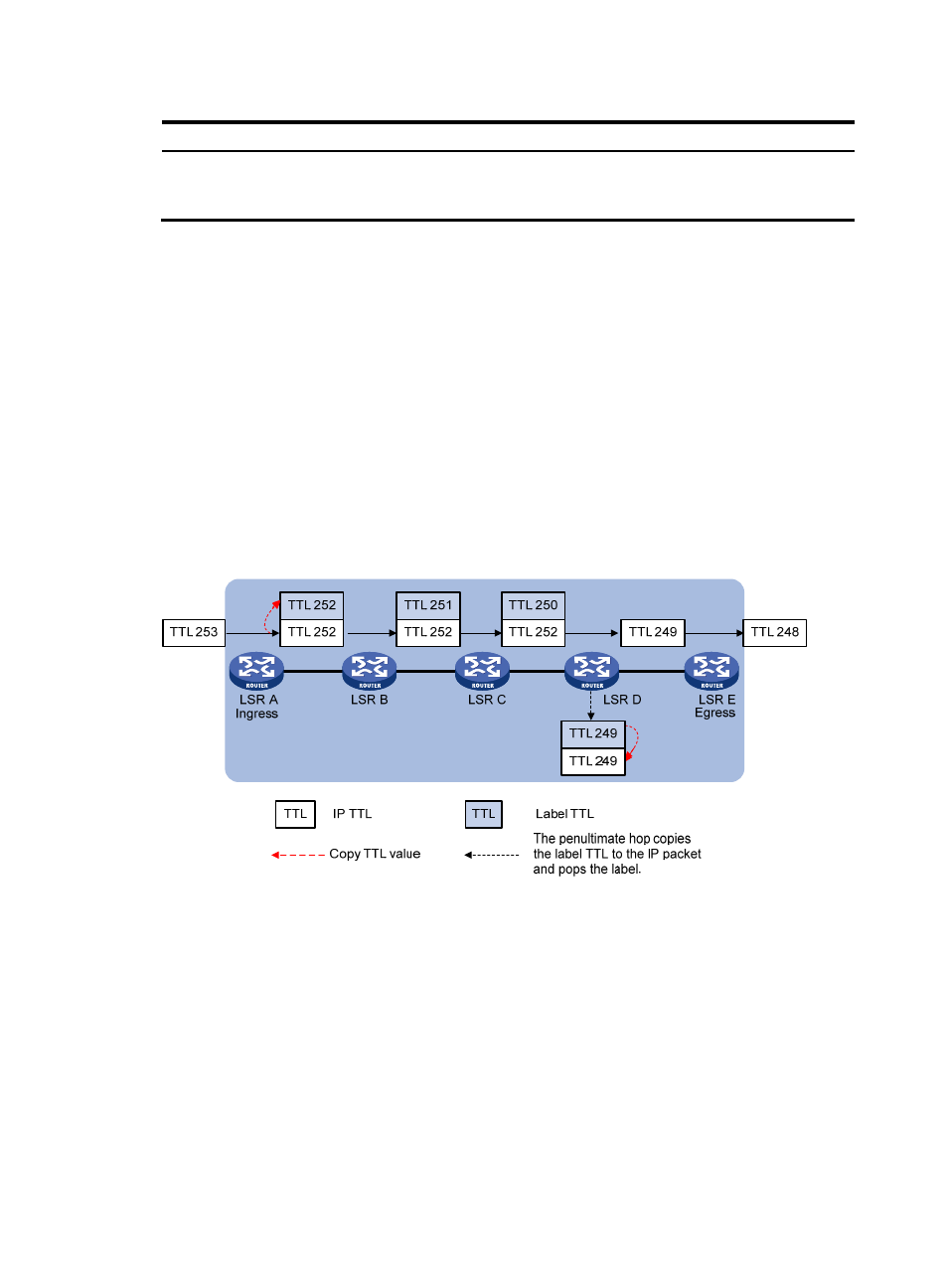Managing and optimizing mpls forwarding, Configuring ttl processing mode at ingress – H3C Technologies H3C S10500 Series Switches User Manual
Page 77

66
Use the following command to reset LDP sessions:
To do…
Use the command…
Remarks
Reset LDP sessions
reset mpls ldp [ all | [ vpn-instance
vpn-instance-name ] [ fec mask |
peer peer-id ] ]
Available in user view
Managing and optimizing MPLS forwarding
Configuring TTL processing mode at ingress
At the ingress of an LSP, a label stack encapsulated with a TTL field is added to each packet. Whether the
label TTL takes the IP TTL or not depends on whether IP TTL propagation is enabled:
•
With IP TTL propagation enabled: When the ingress labels a packet, it copies the TTL value of the
original IP packet to the TTL field of the label. When an LSR forwards the labeled packet, it
decrements the TTL value of the label at the stack top by 1. When an LSR pops a label, it copies the
TTL value of the label at the stack top back to the TTL field of the IP packet. In this case, the TTL value
of a packet is decreased hop by hop when forwarded along the LSP. Therefore, the result of tracert
will reflect the real path along which the packet has traveled.
Figure 21 Label TTL processing when IP TTL propagation is enabled
•
With IP TTL propagation disabled: When the ingress labels a packet, it does not copy the TTL value
of the original IP packet to the TTL field of the label, and the label TTL is set to 255. When an LSR
forwards the labeled packet, it decrements the TTL value of the label at the stack top by 1. When an
LSR pops a label, it compares the IP TTL and the label TTL and uses the smaller value as the TTL of
the IP packet. In this case, the result of tracert does not show the hops within the MPLS backbone,
as if the ingress and egress were connected directly.
